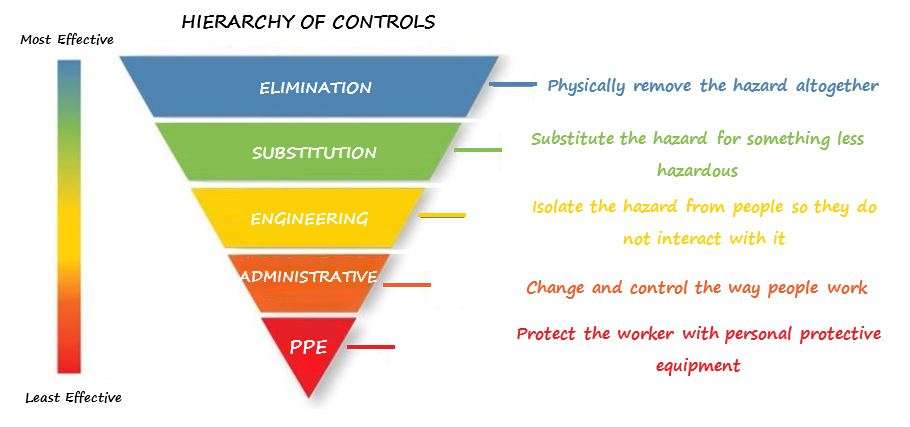Can you tell me about more about control measures and what they are, in SafetyWallet?
Sure, no problems. As we mentioned earlier, control measures are actions you take to reduce the potential exposure of a hazard to anyone in your workplace. By implementing these control measures and reducing the risk exposure, you reduce the number of injuries in your workplace, making it both healthier and safer.
We place control measure actions into five major categories. More often than not, you will hear of them being referred to as the 'Hierarchy of Controls', which places the main categories into an order of importance, from most effective to least effective:
1/. Elimination: This is always first if it is possible! By removing the hazard altogether, it cannot represent a potential hazard to anyone in your workplace.
2/. Substitution: If the hazard cannot be removed, then maybe it can be replaced with something less hazardous instead. A good example is replacing a toxic chemical in a process with a chemical which achieves the same thing but which is less toxic.
3/. Engineering: Here, the aim is to isolate the hazard from people working with it. A good example here is the use of an extractor fan and duct (engineering) to remove harmful fumes or dust (hazard) from an employee, as they are created, thereby preventing the employee from their exposure.
4/. Administrative: This is the 'paperwork' commonly found in health and safety processes and includes things like policies, appointment letters and safe operating procedures but it also includes important awareness factors such as the use of signage in the workplace.
5/. Personal Protective Equipment: This should always be the last option in the list of controls and involves supplying the employee directly with PPE equipment. The PPE acts as an immediate barrier between the employee and the hazard.


Leave a comment